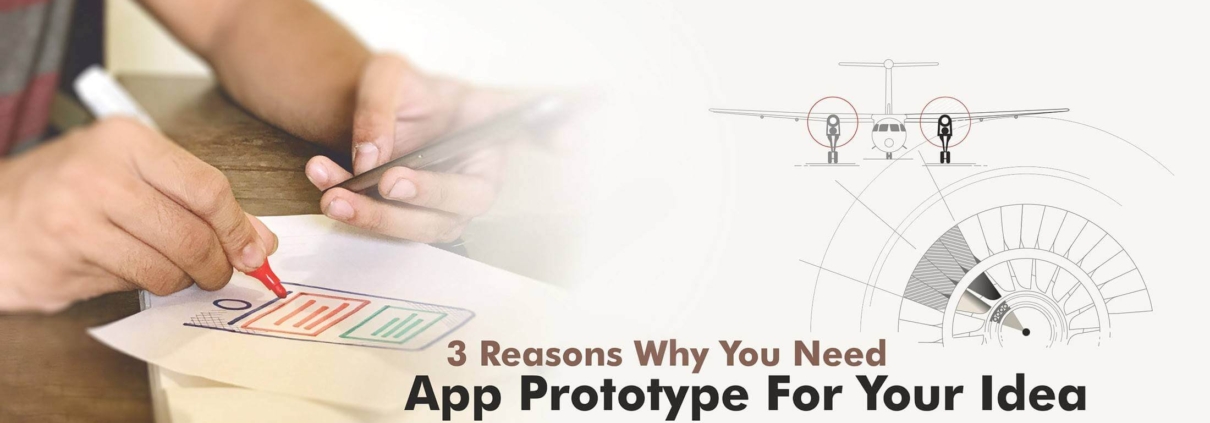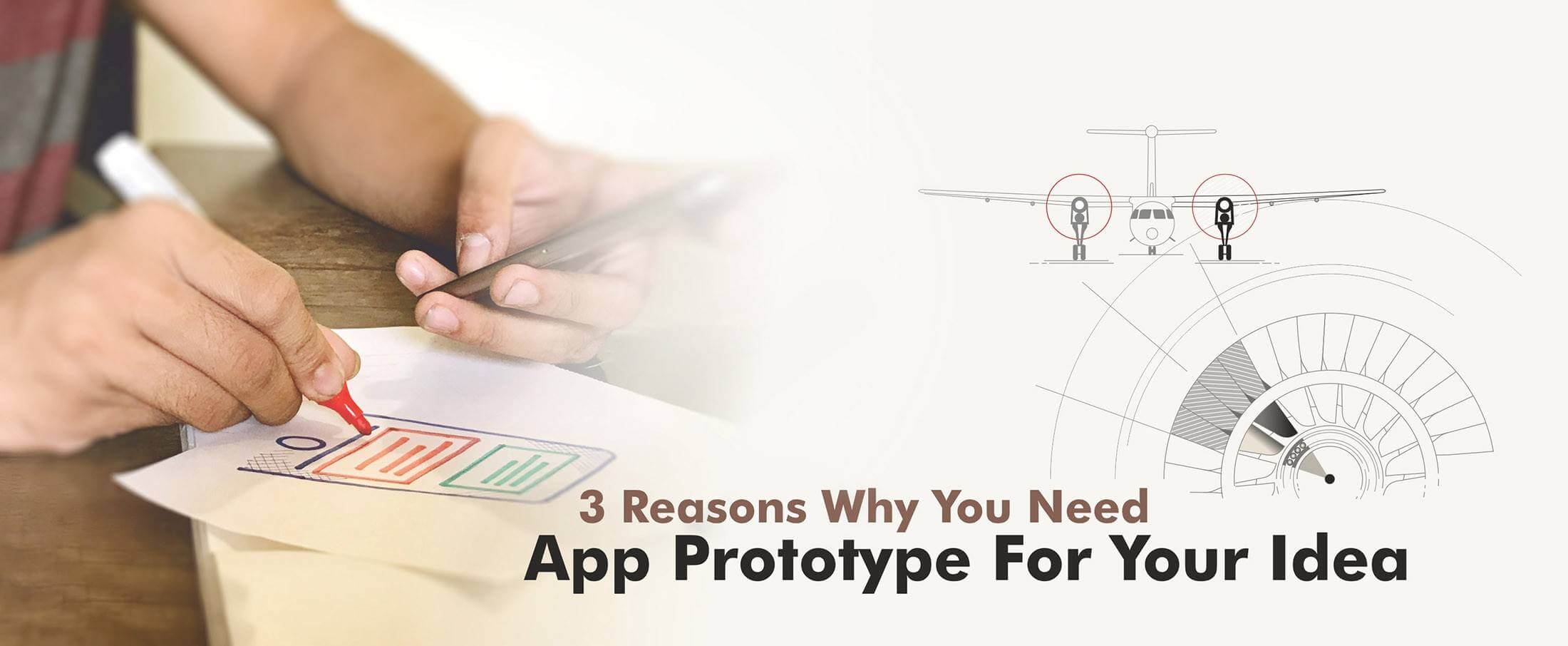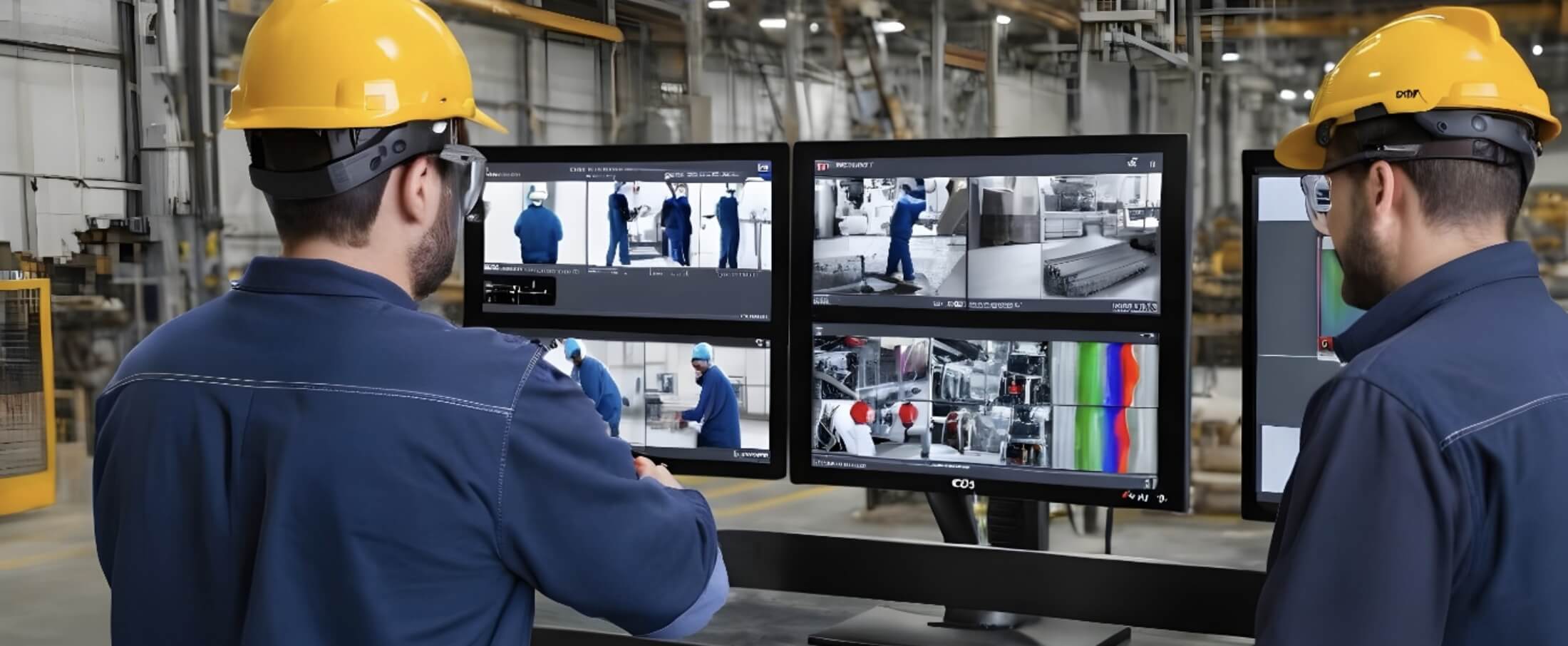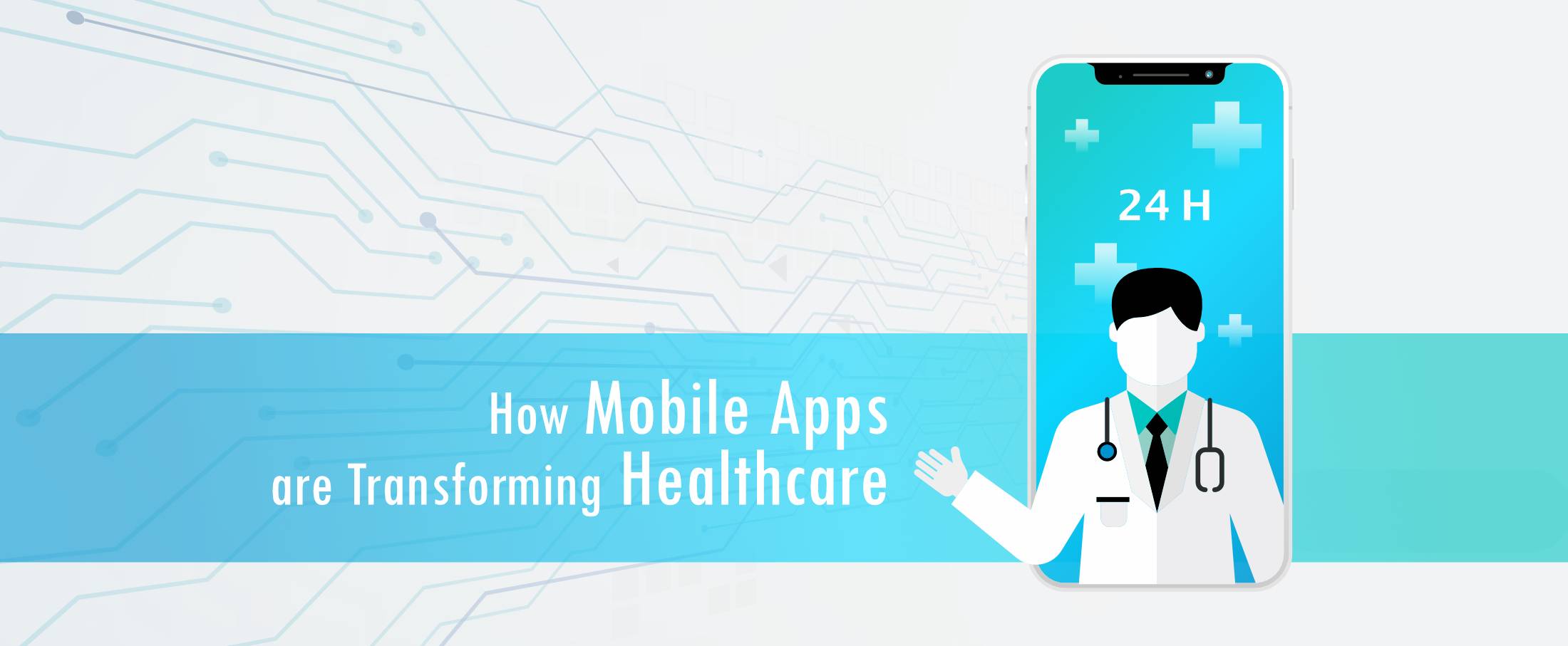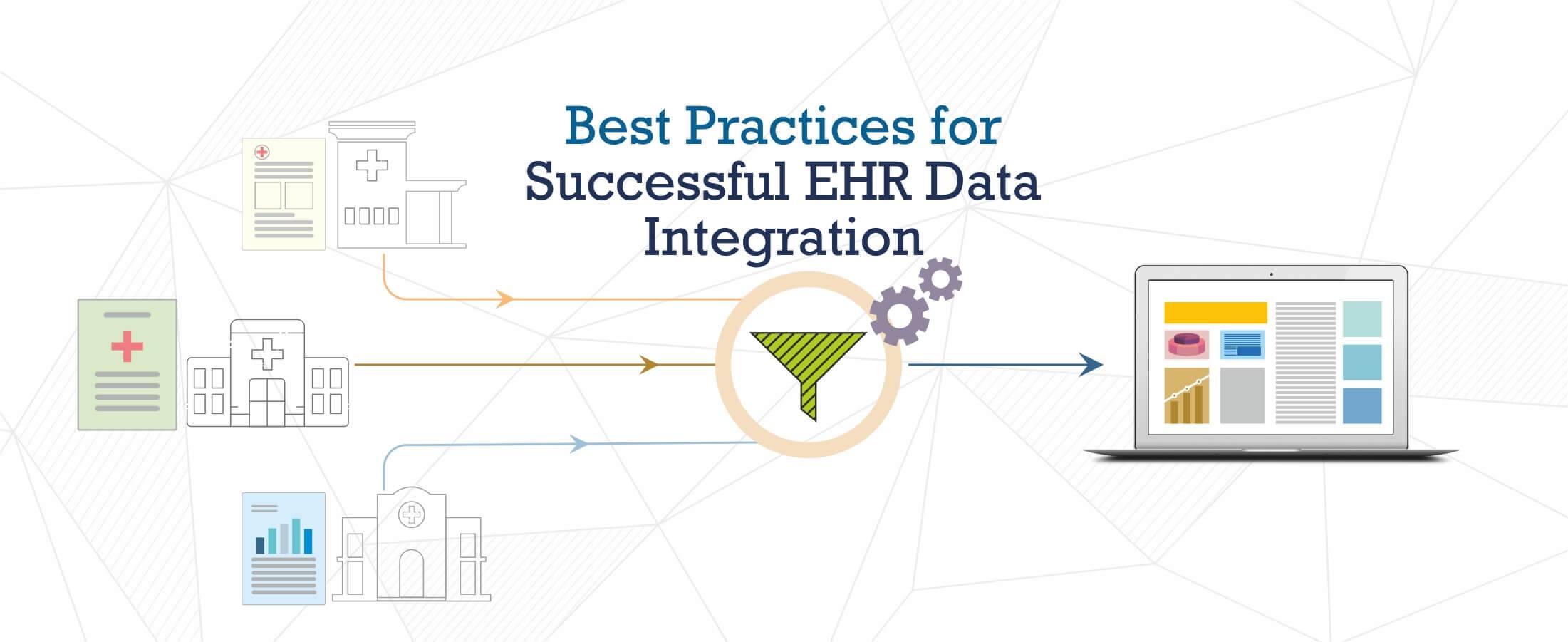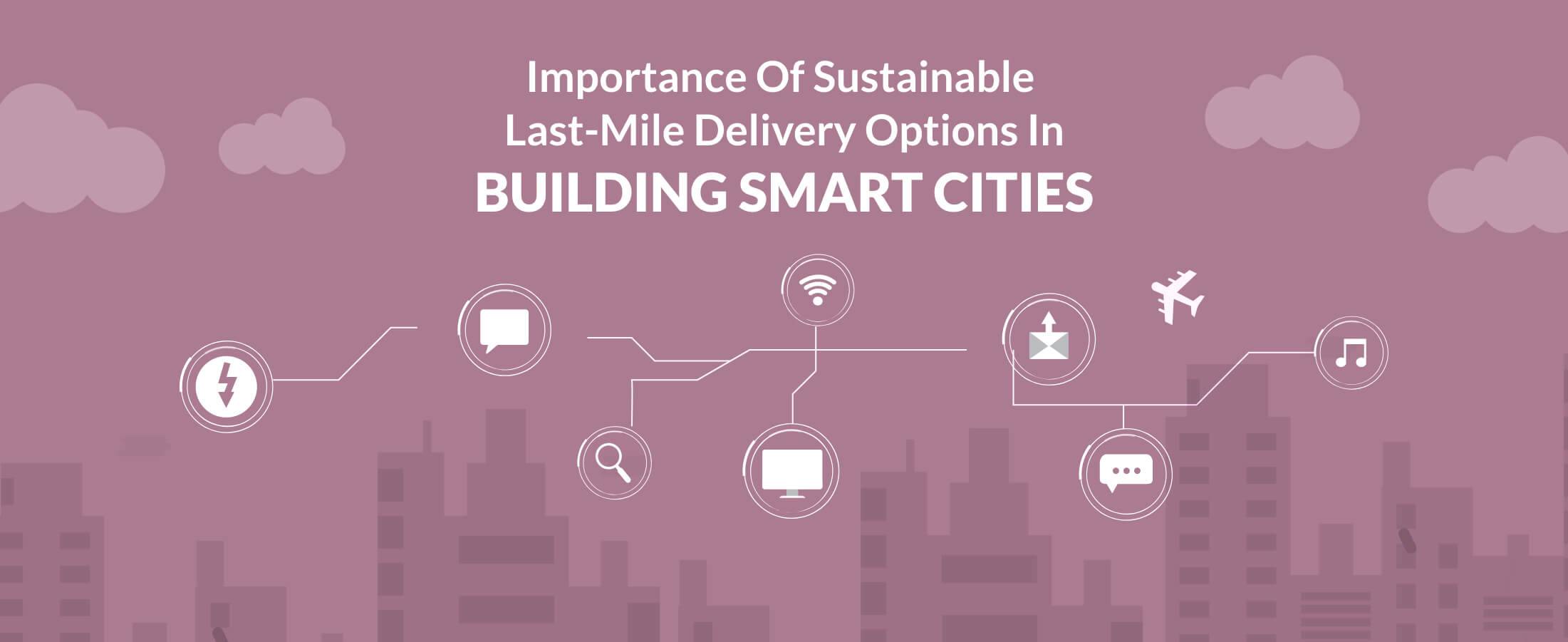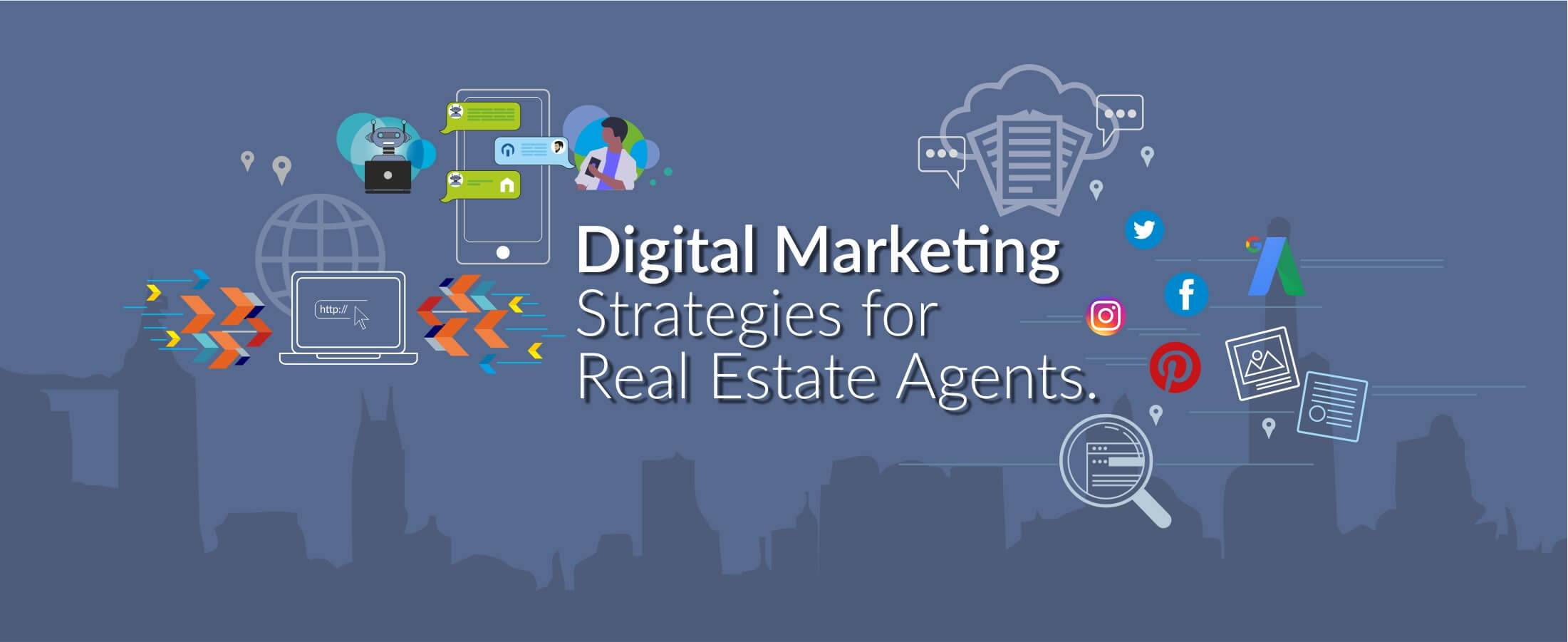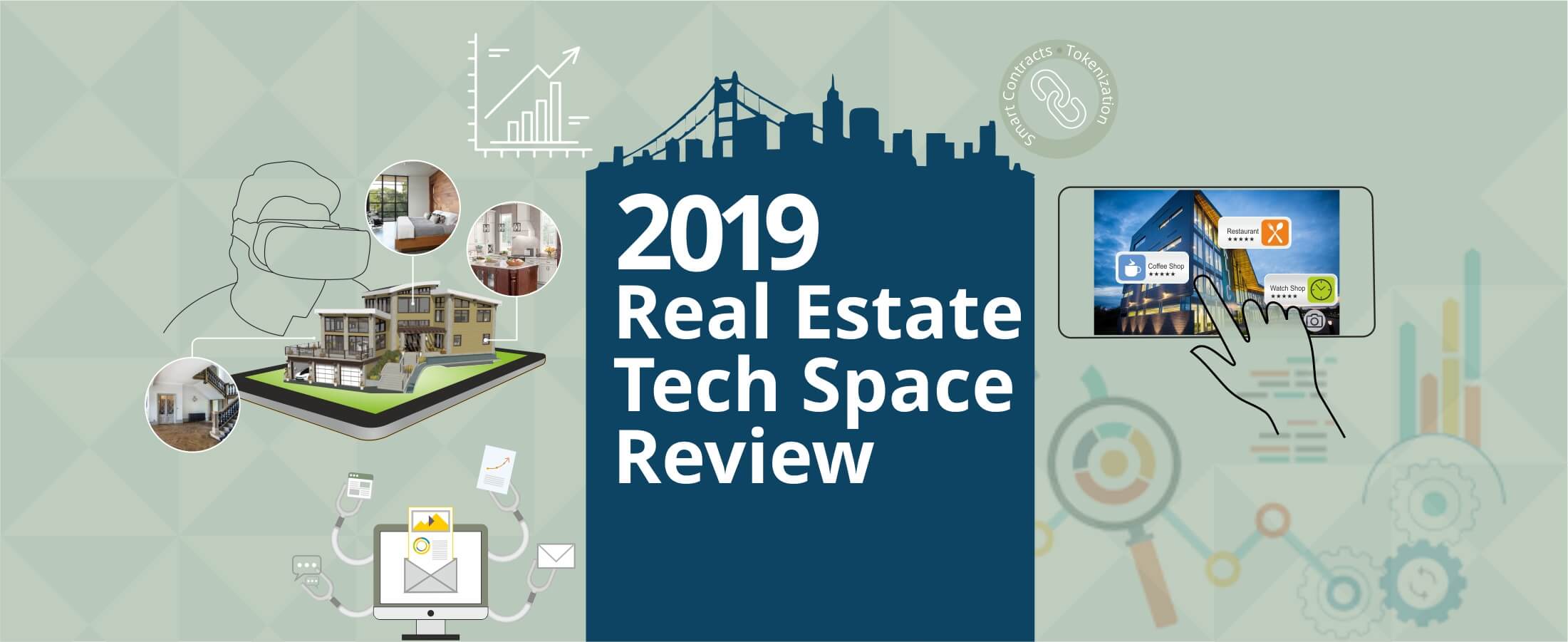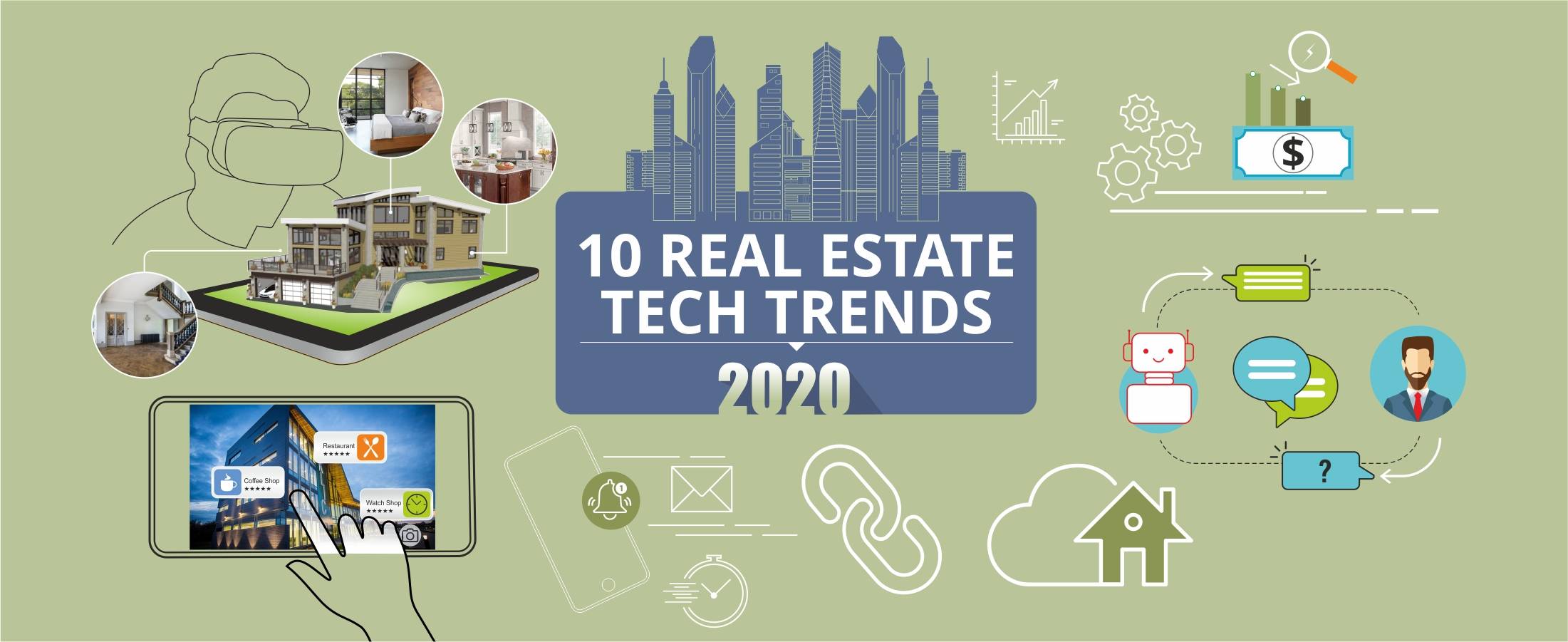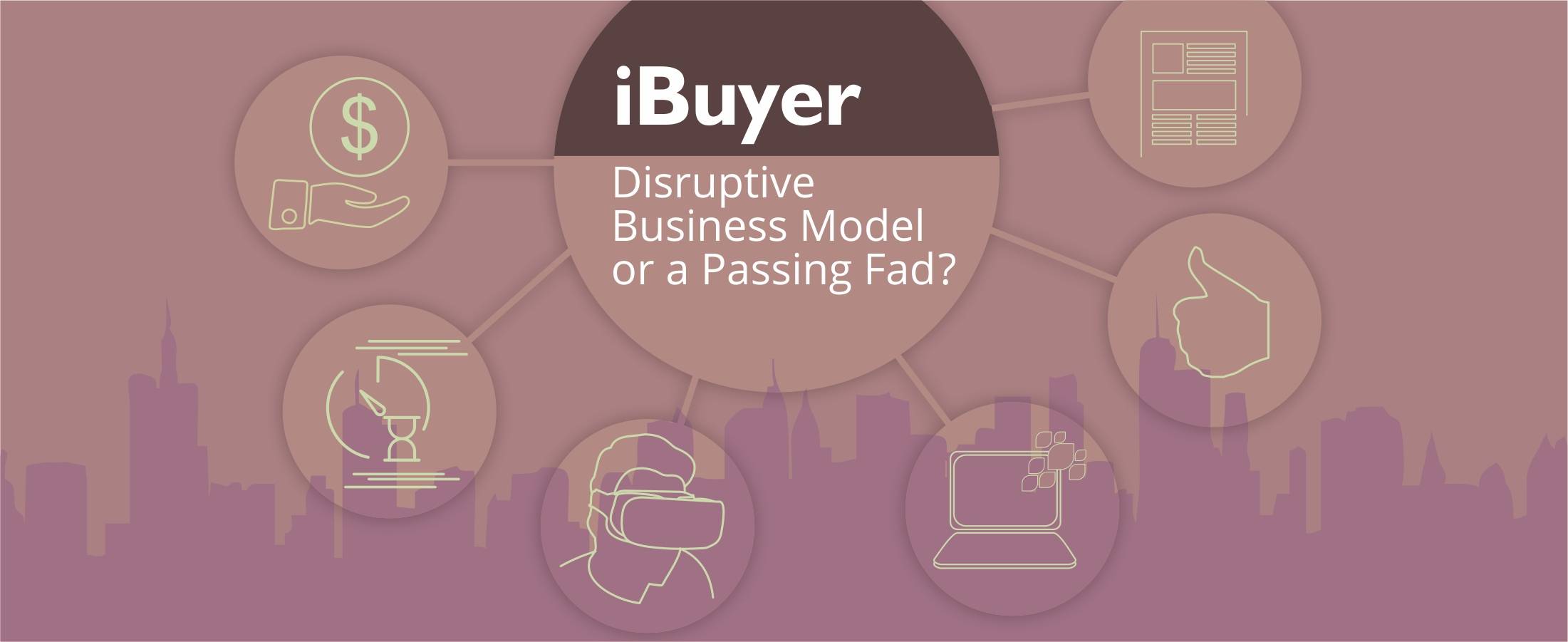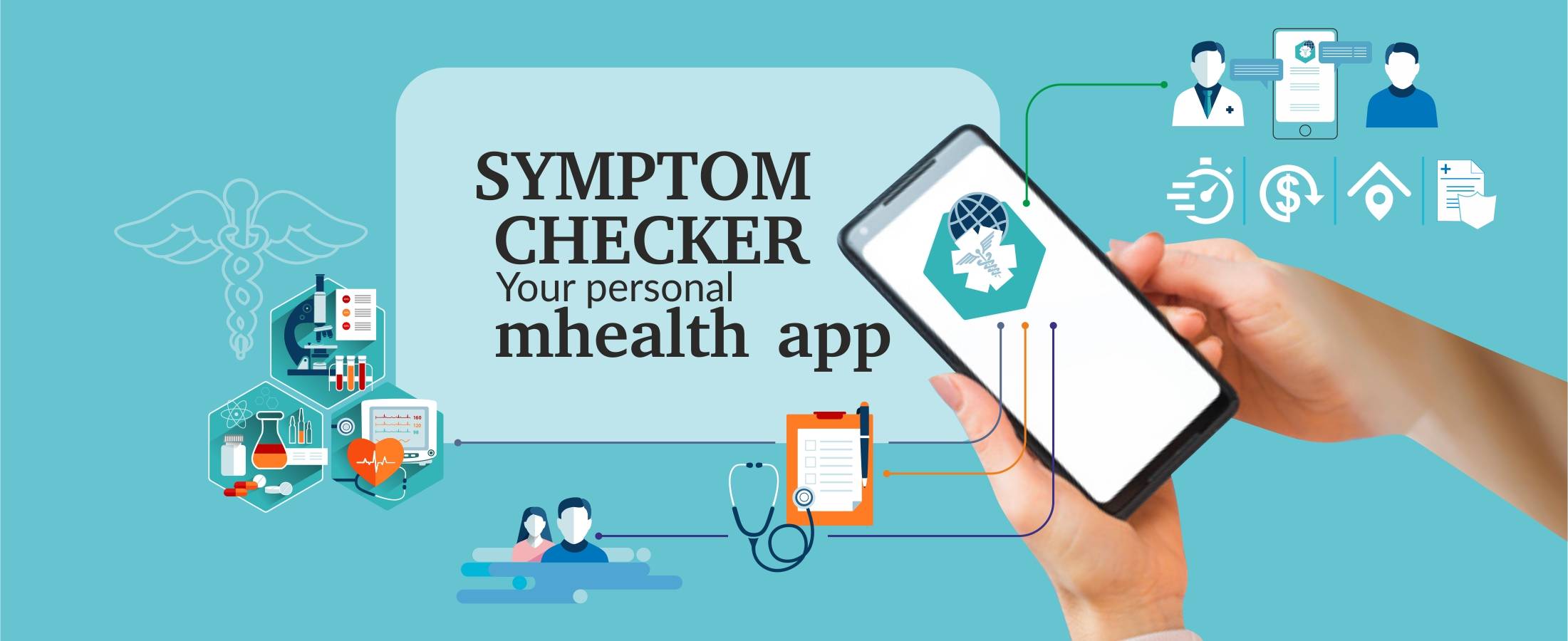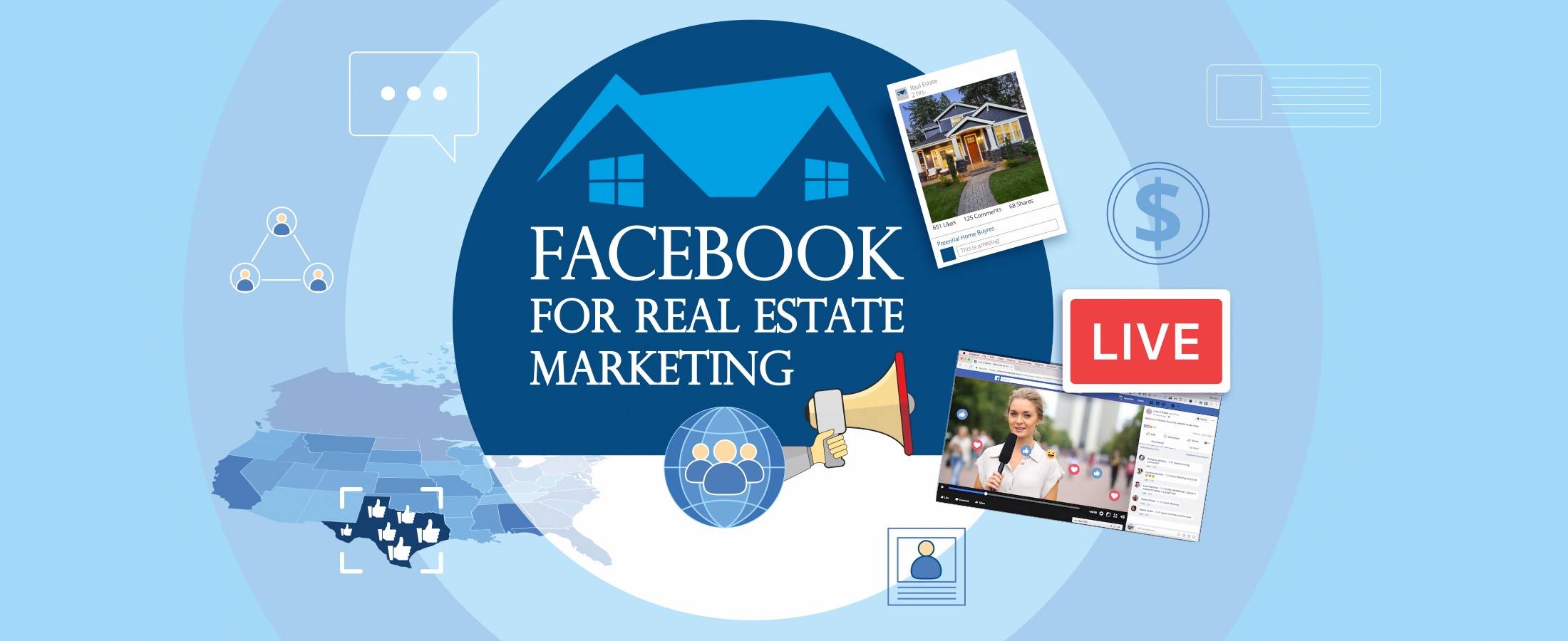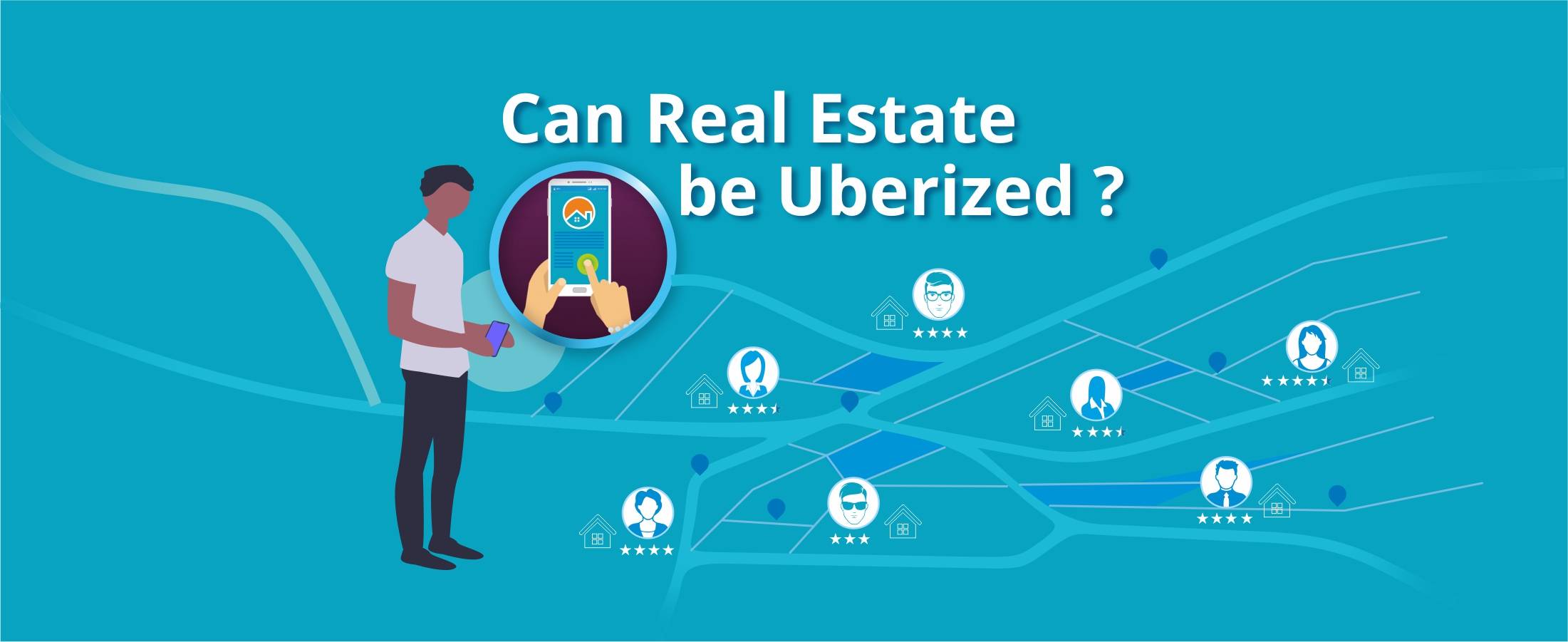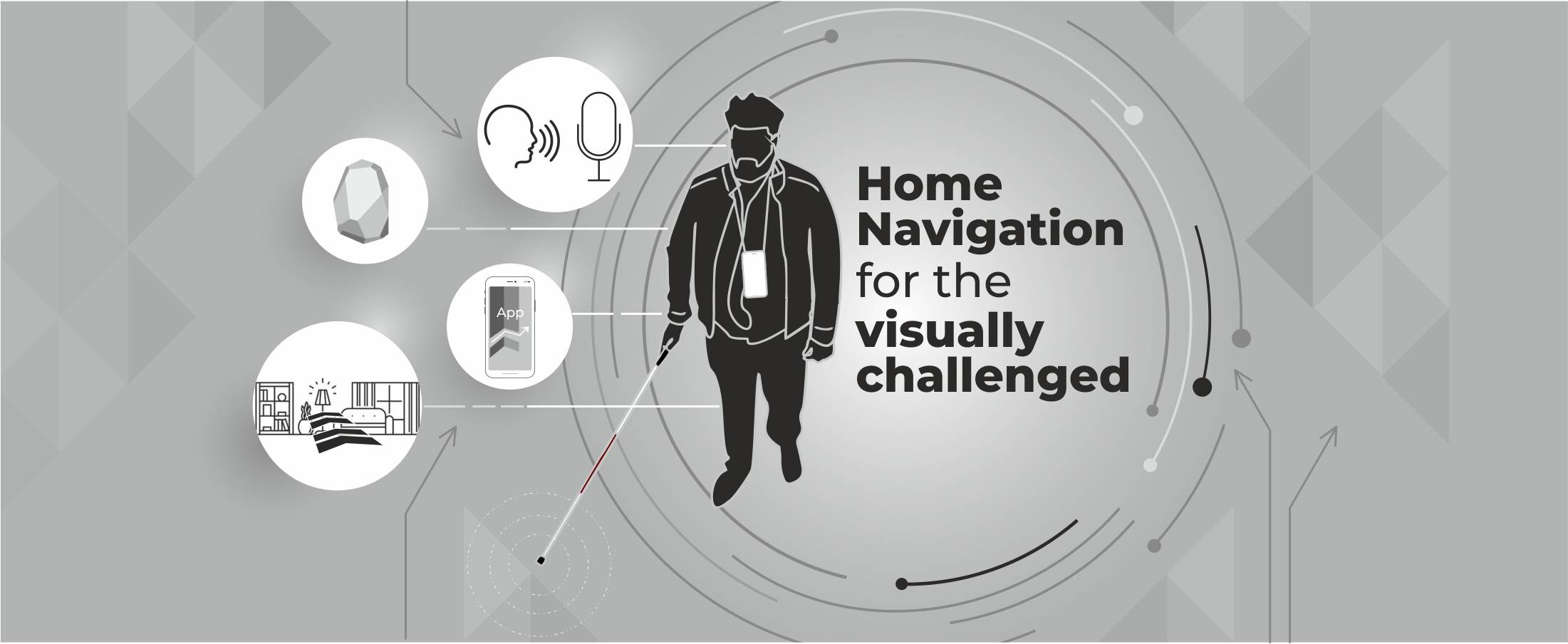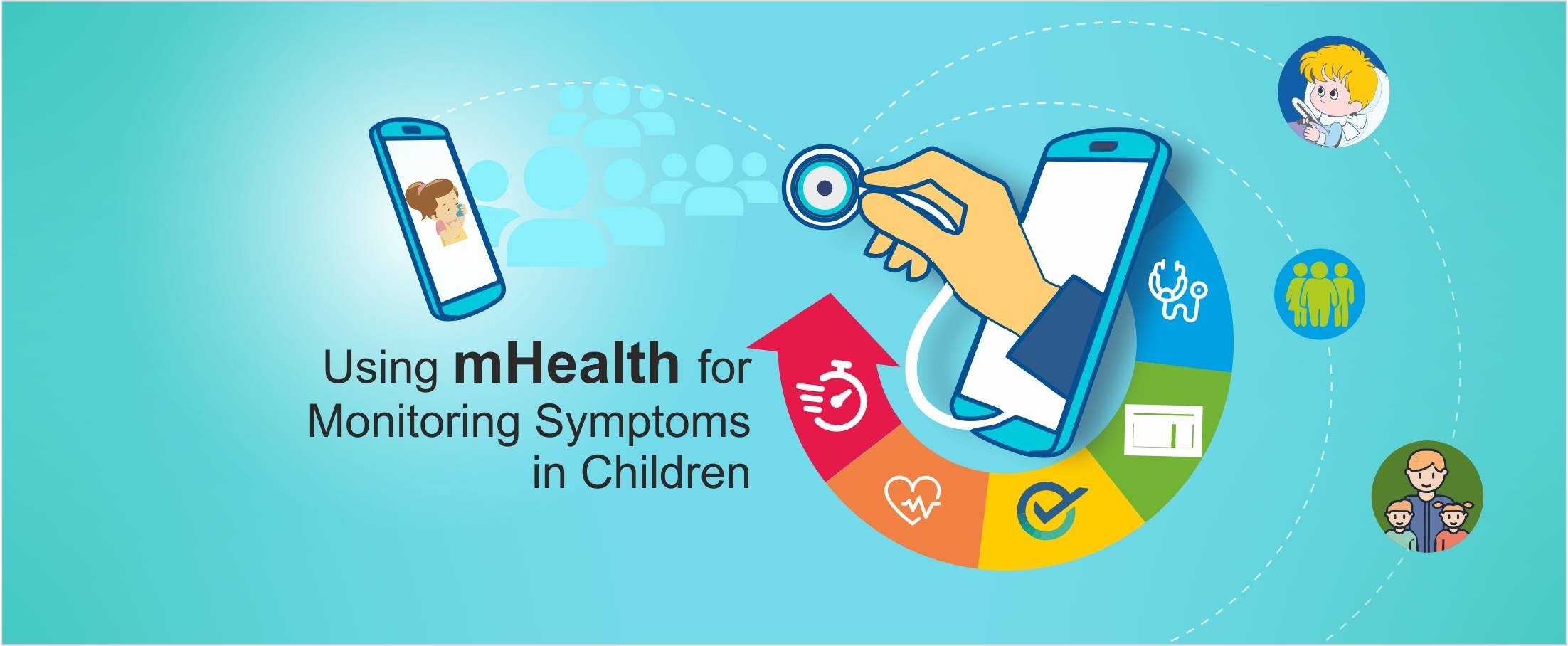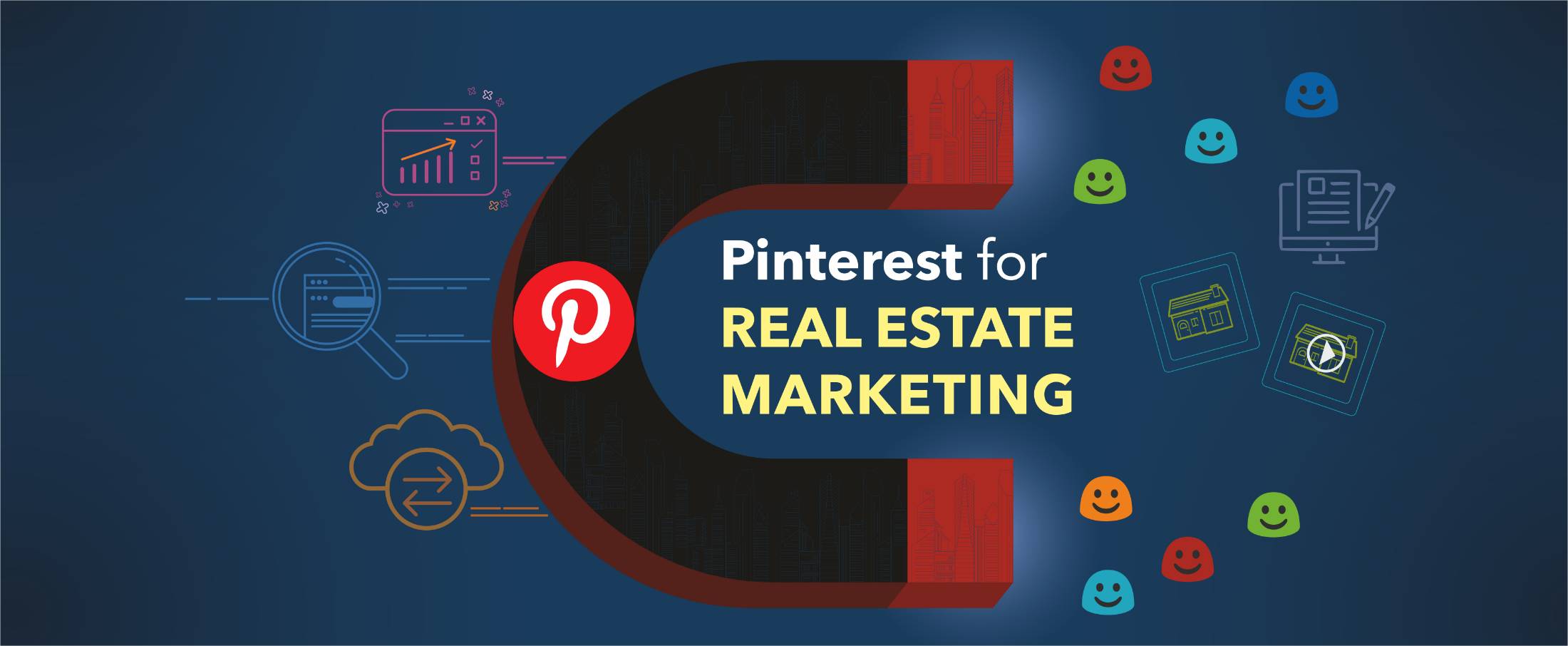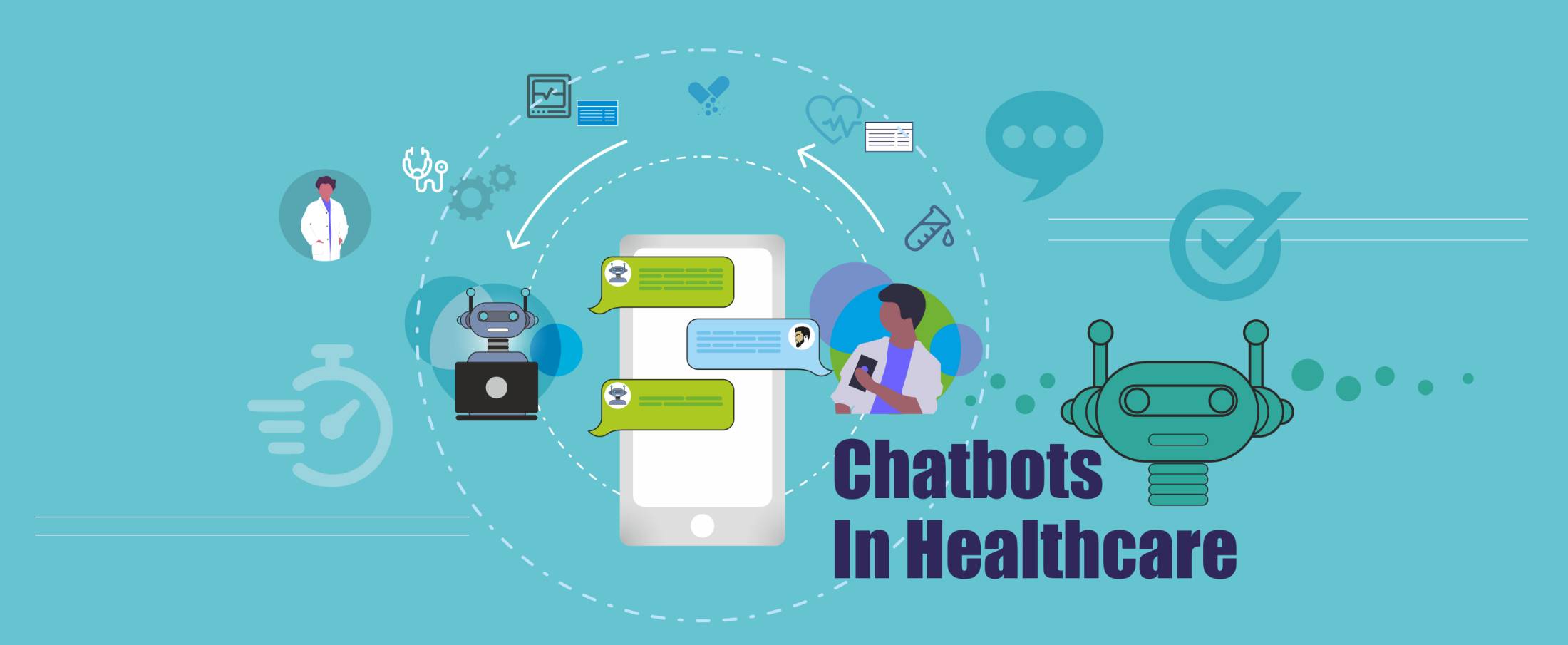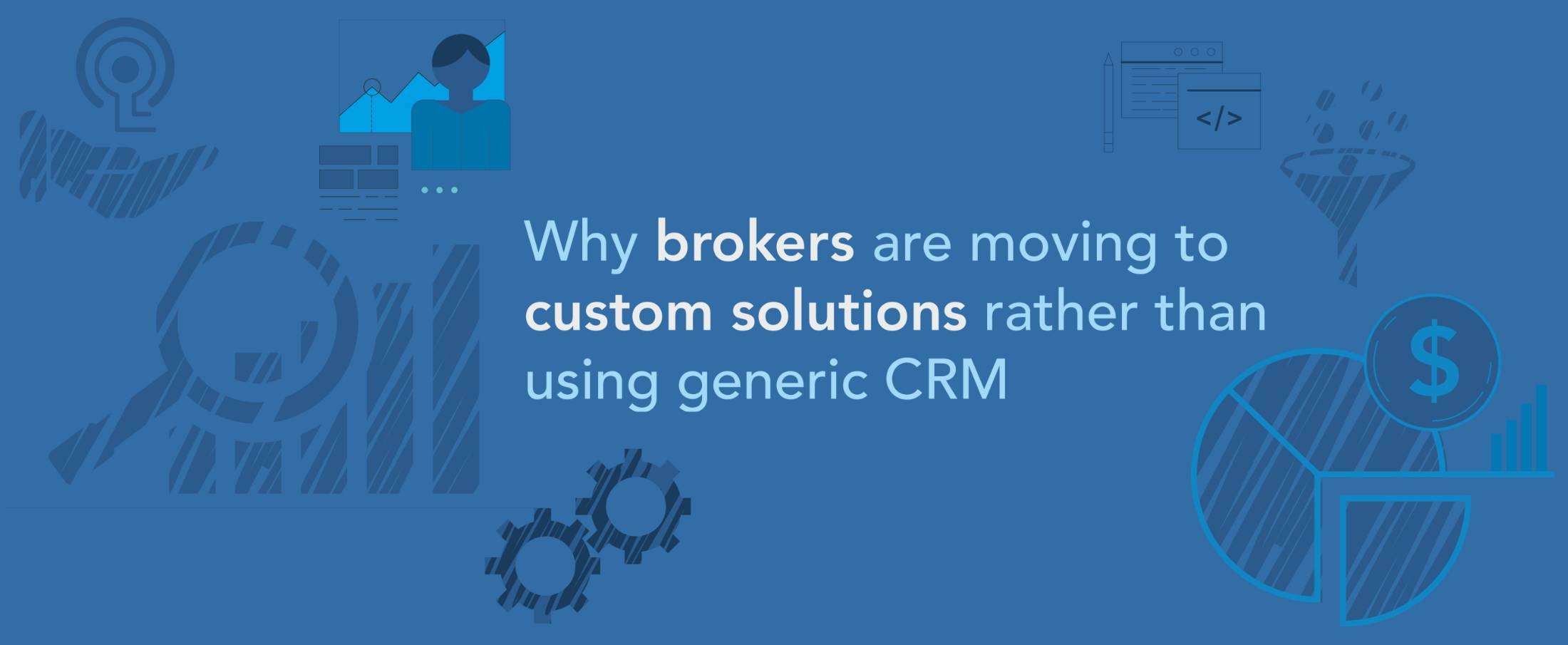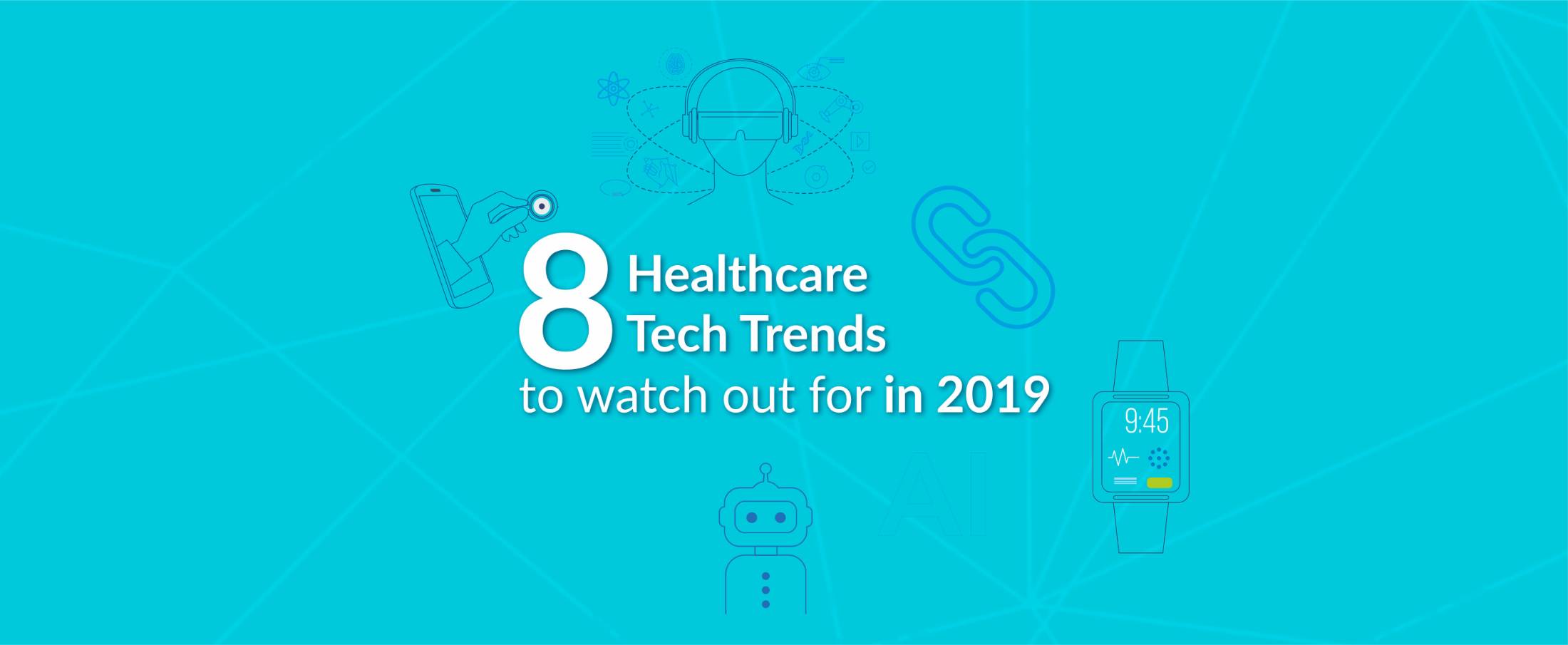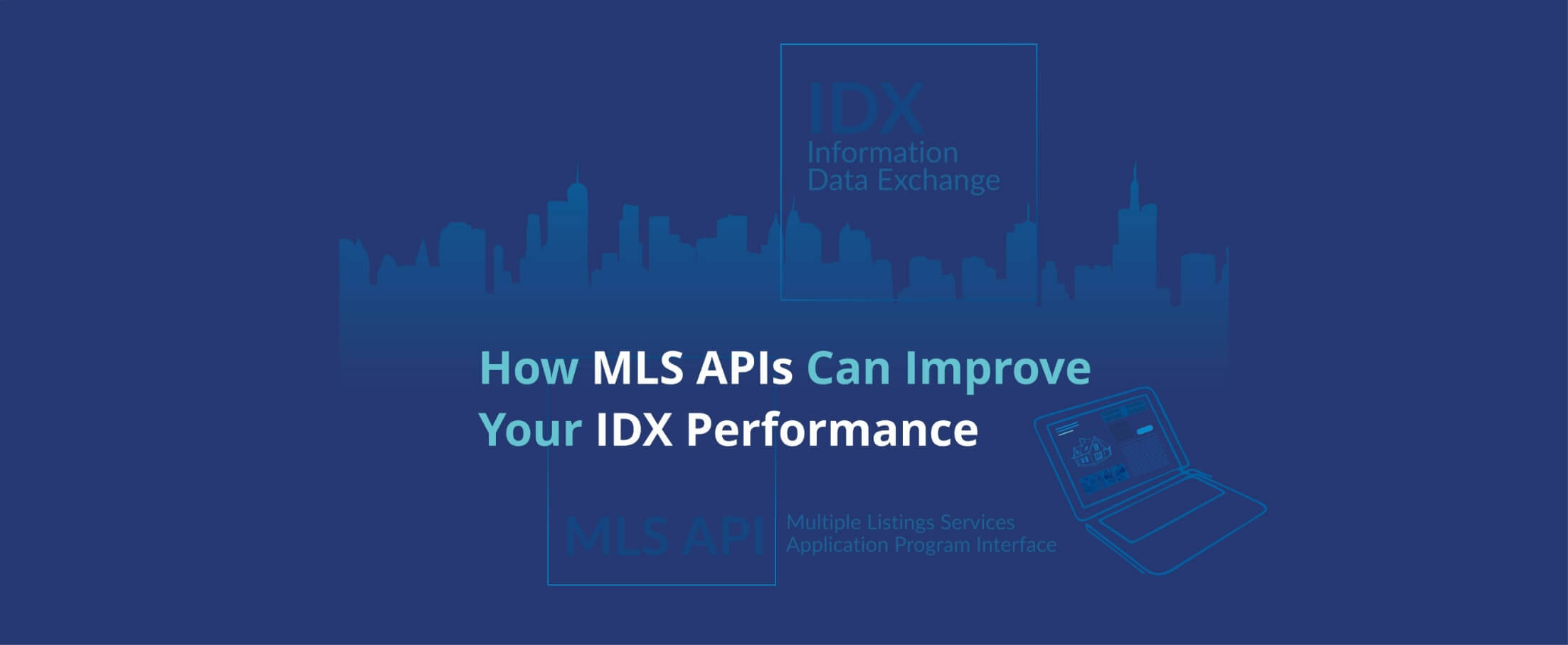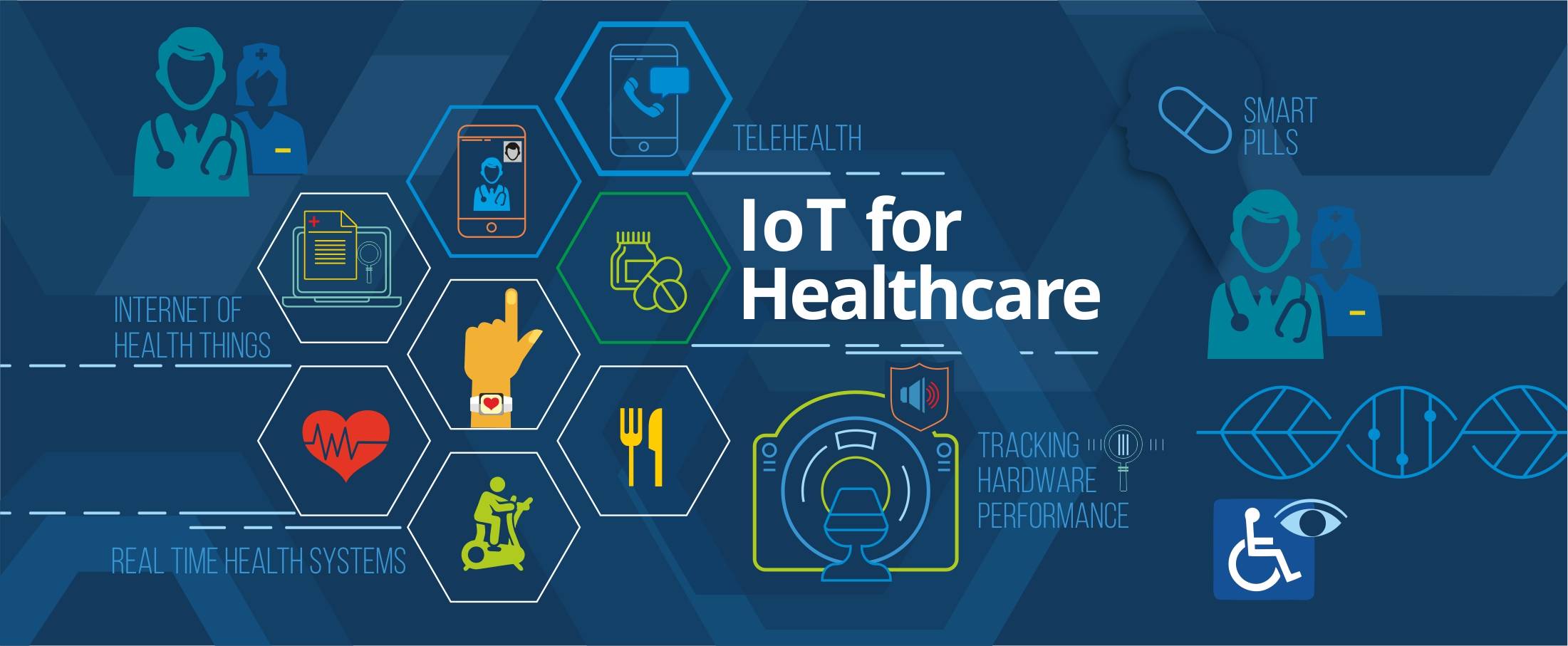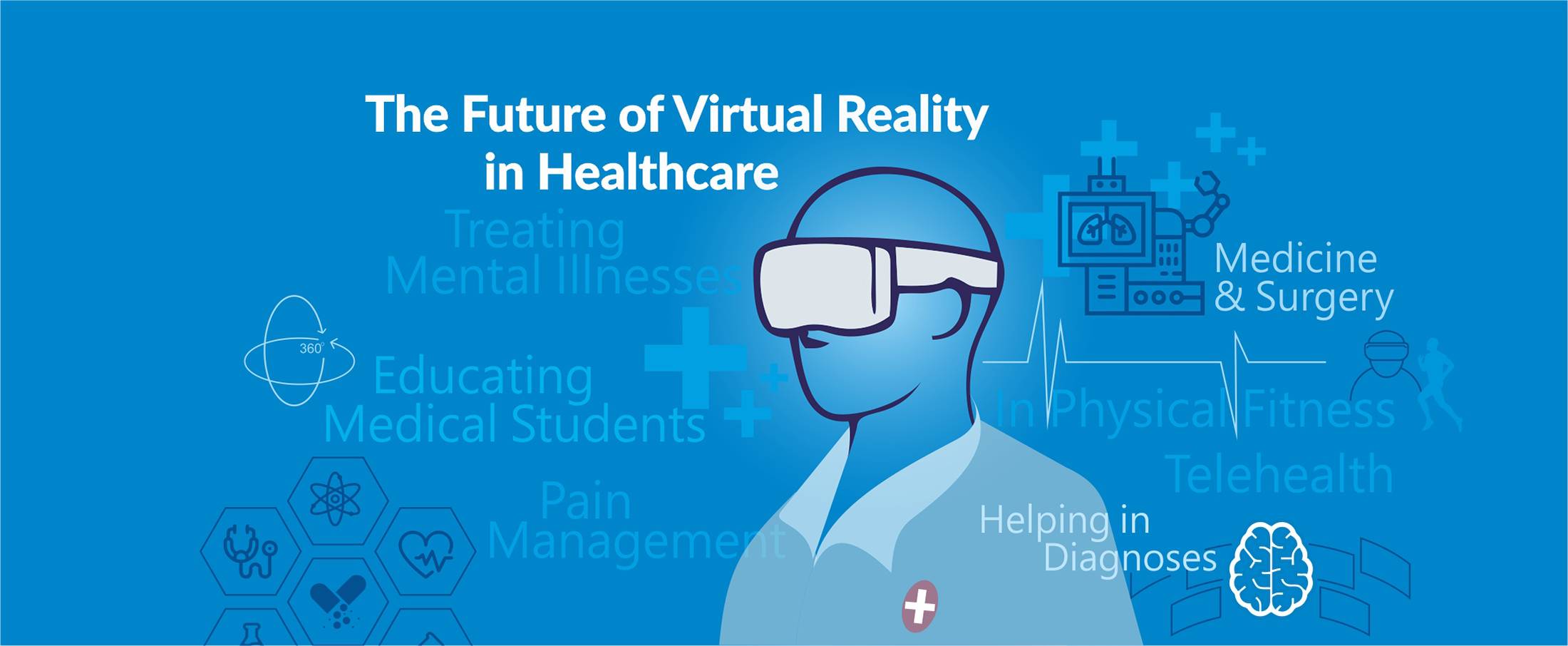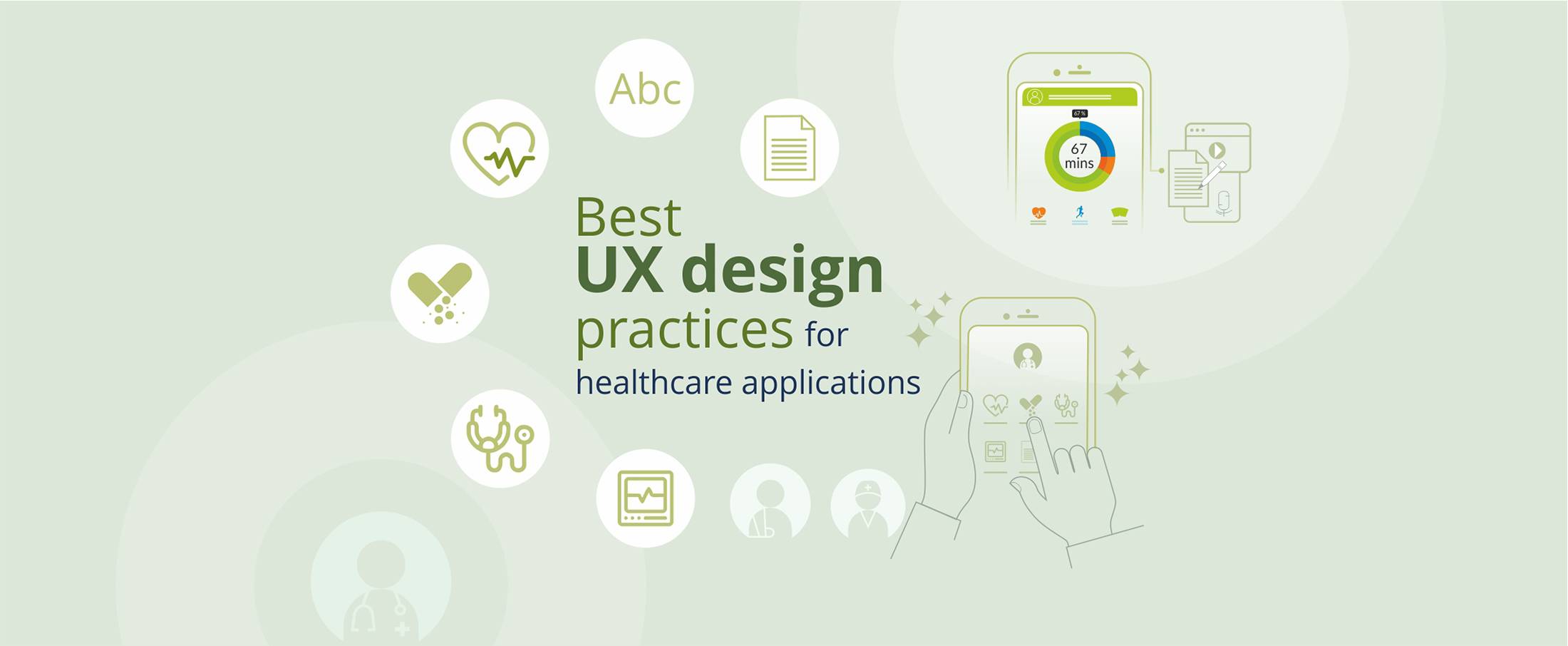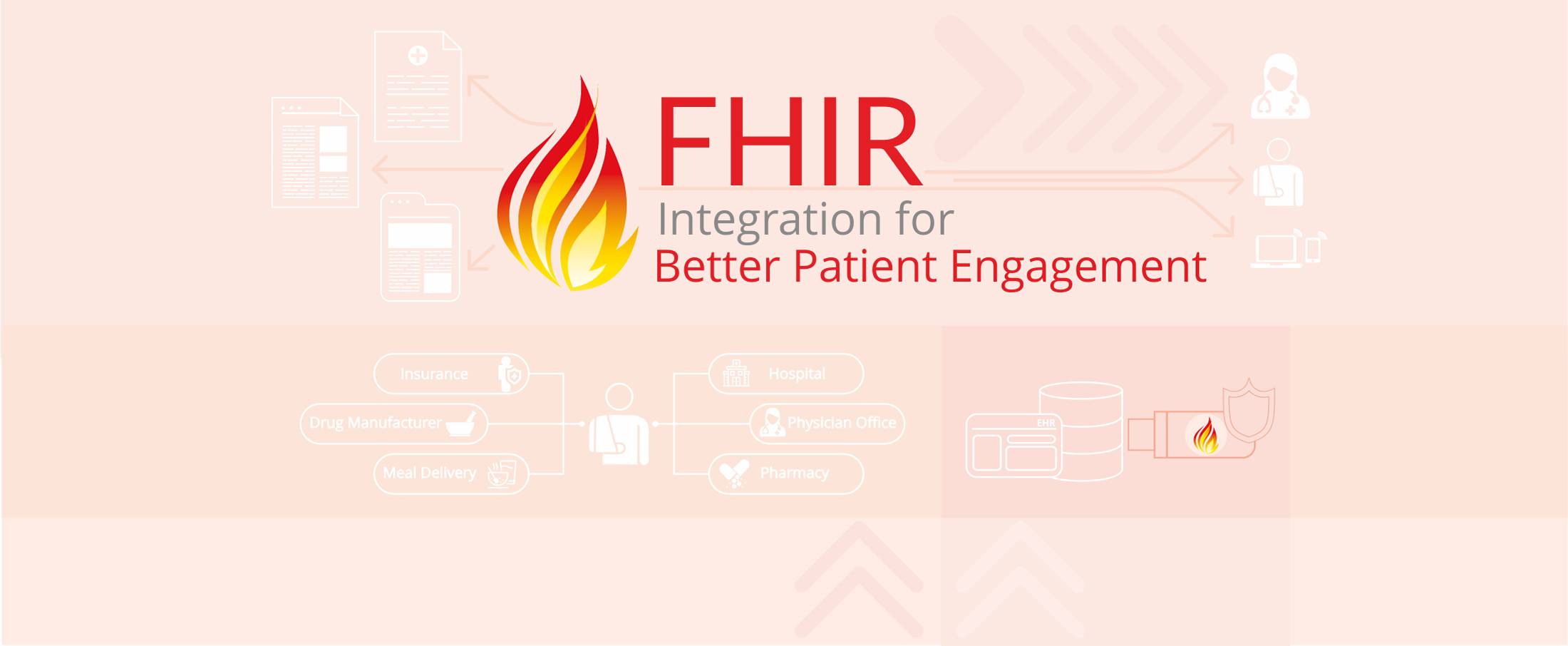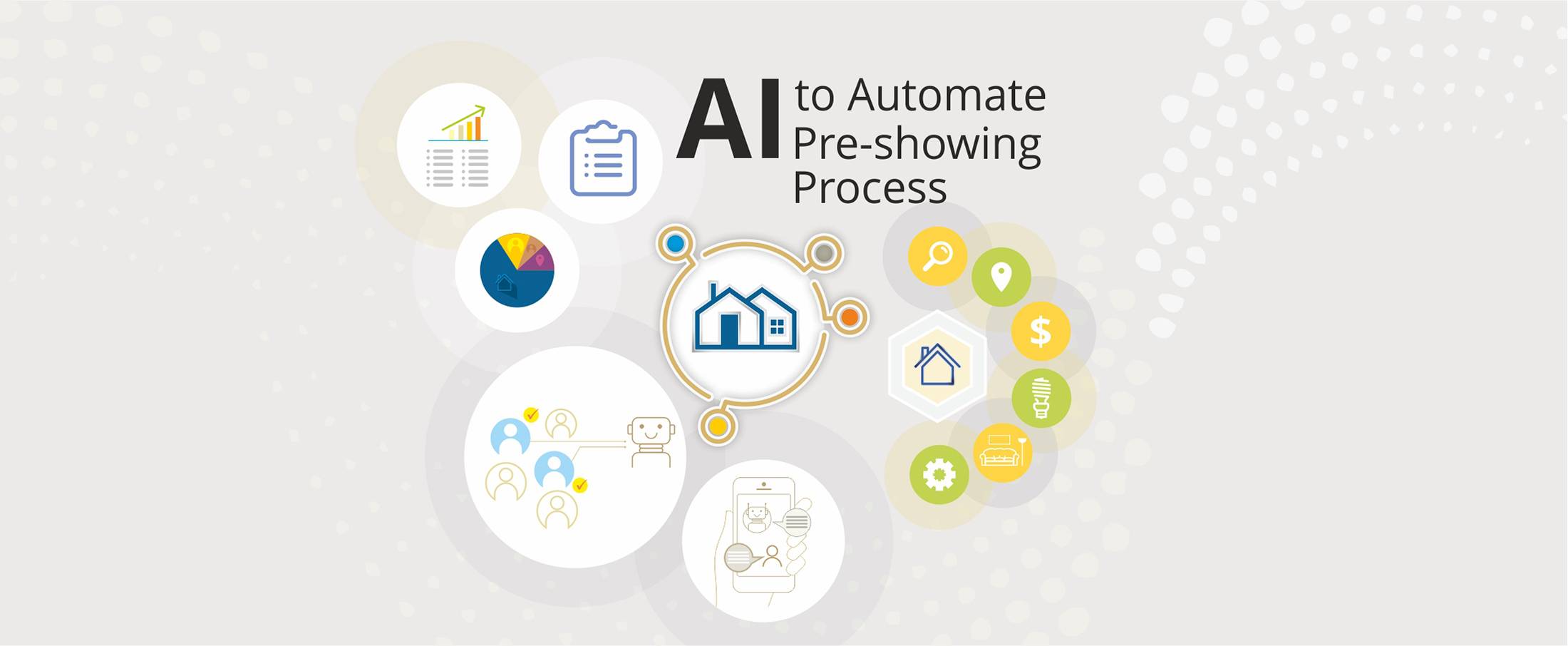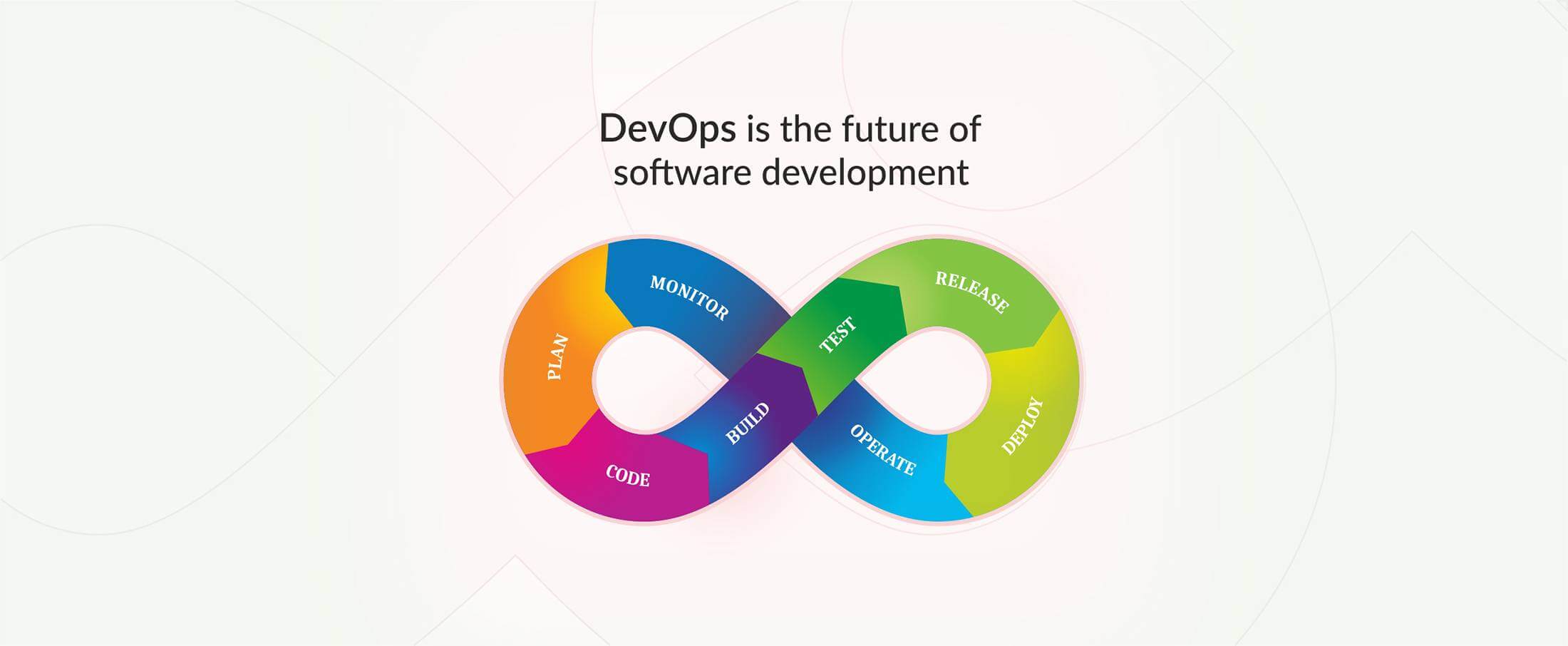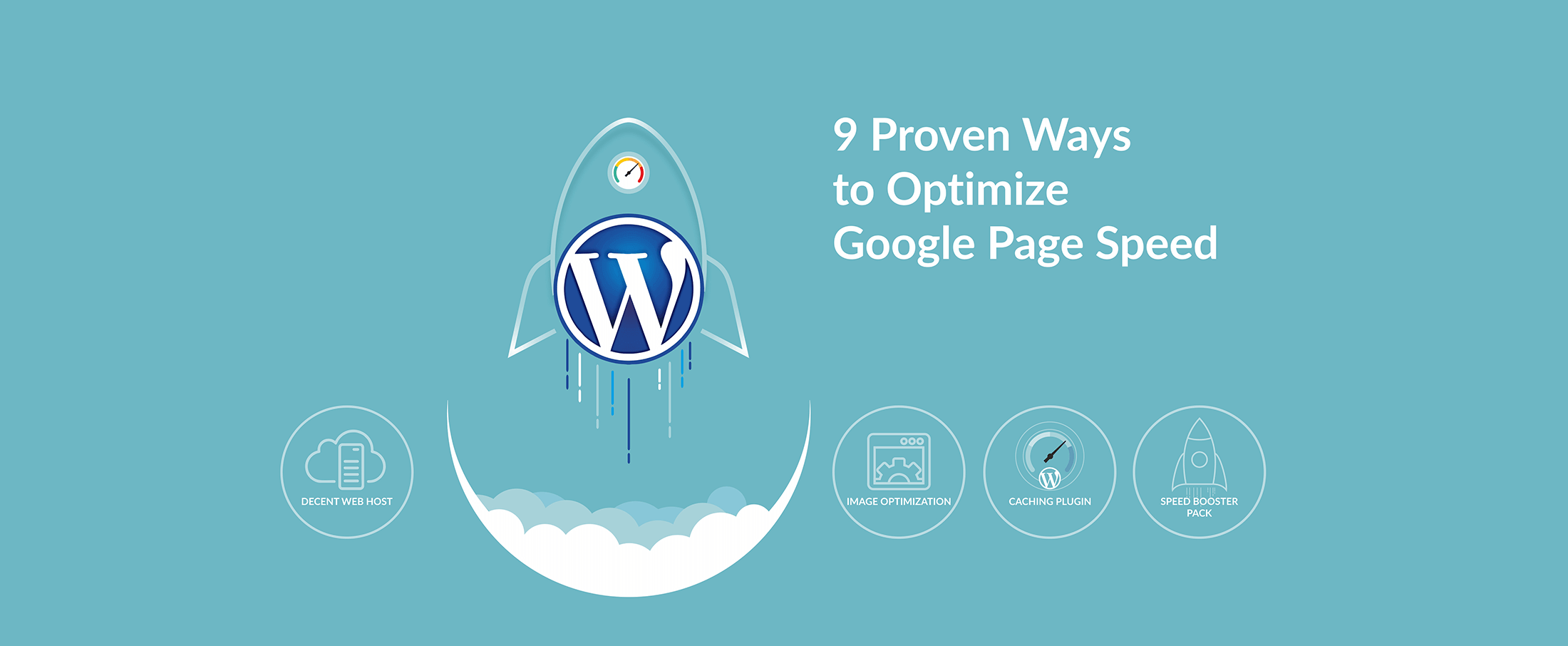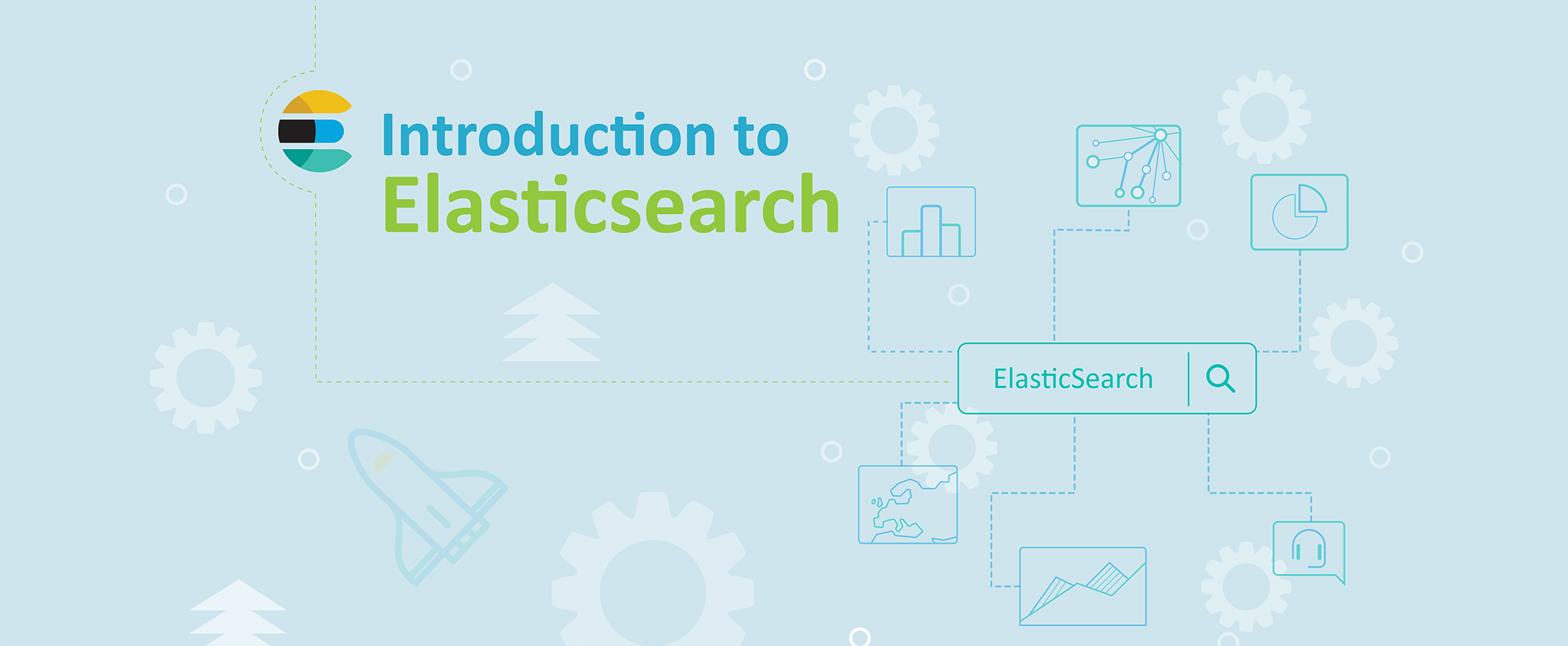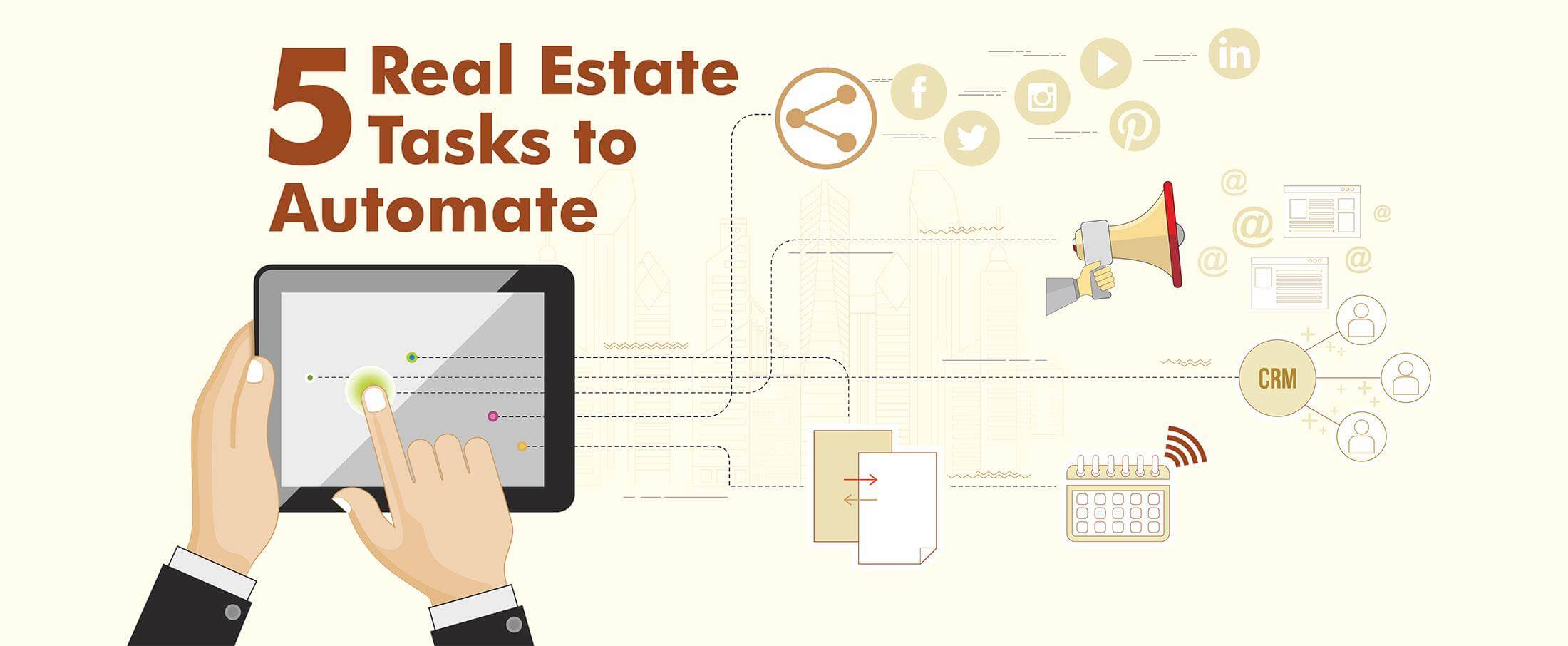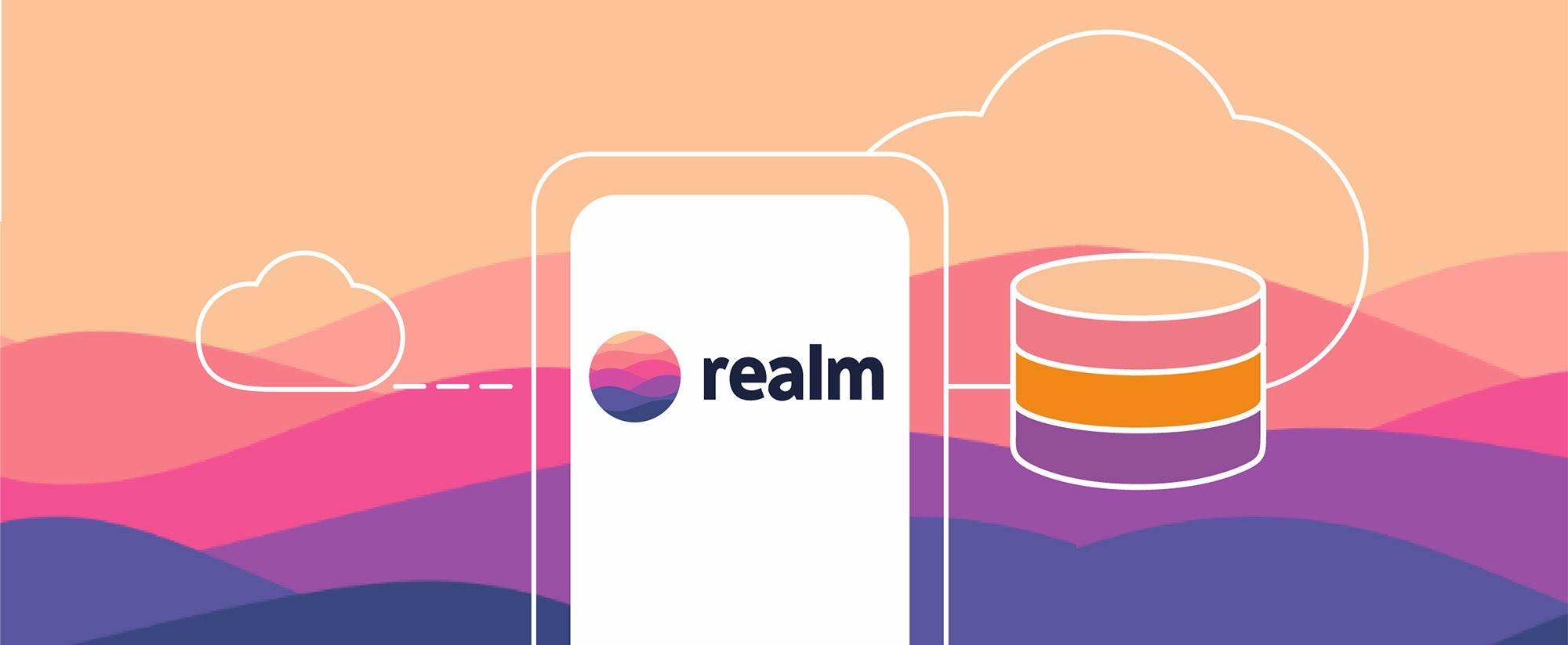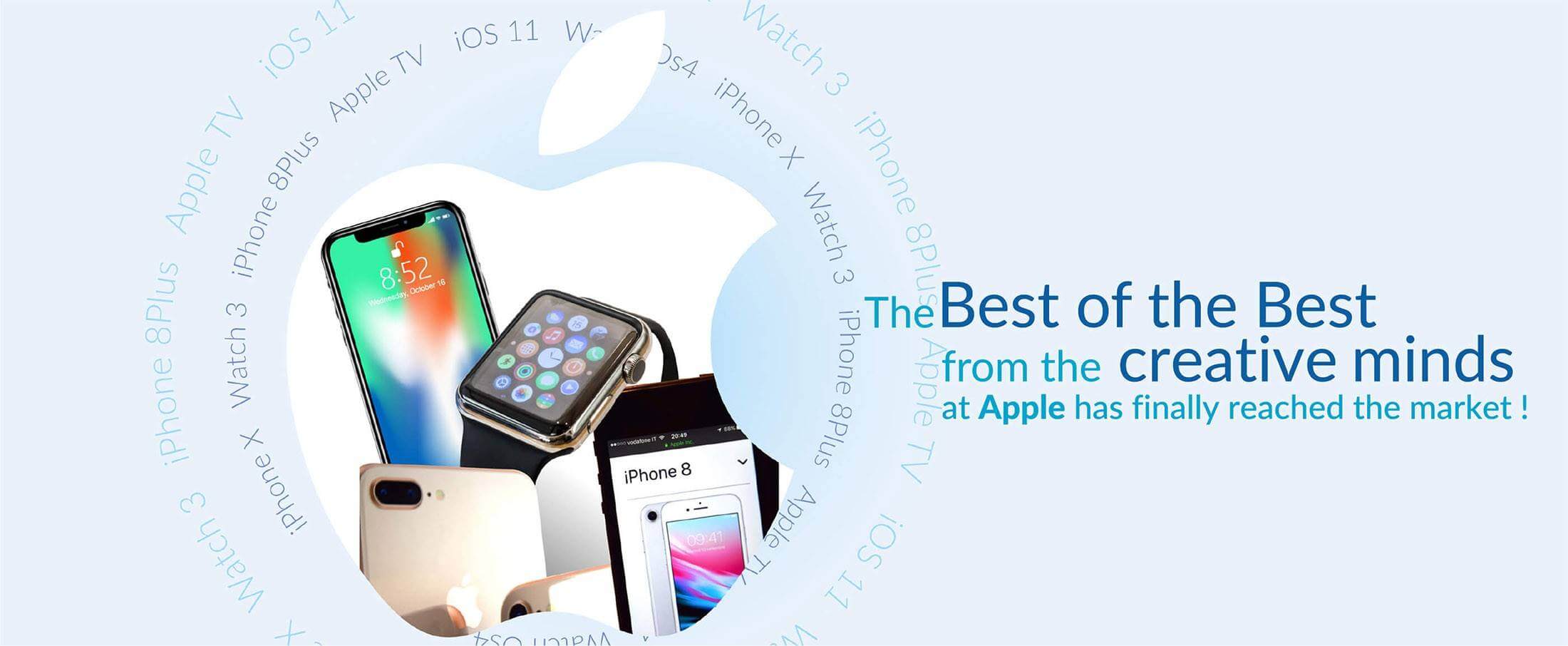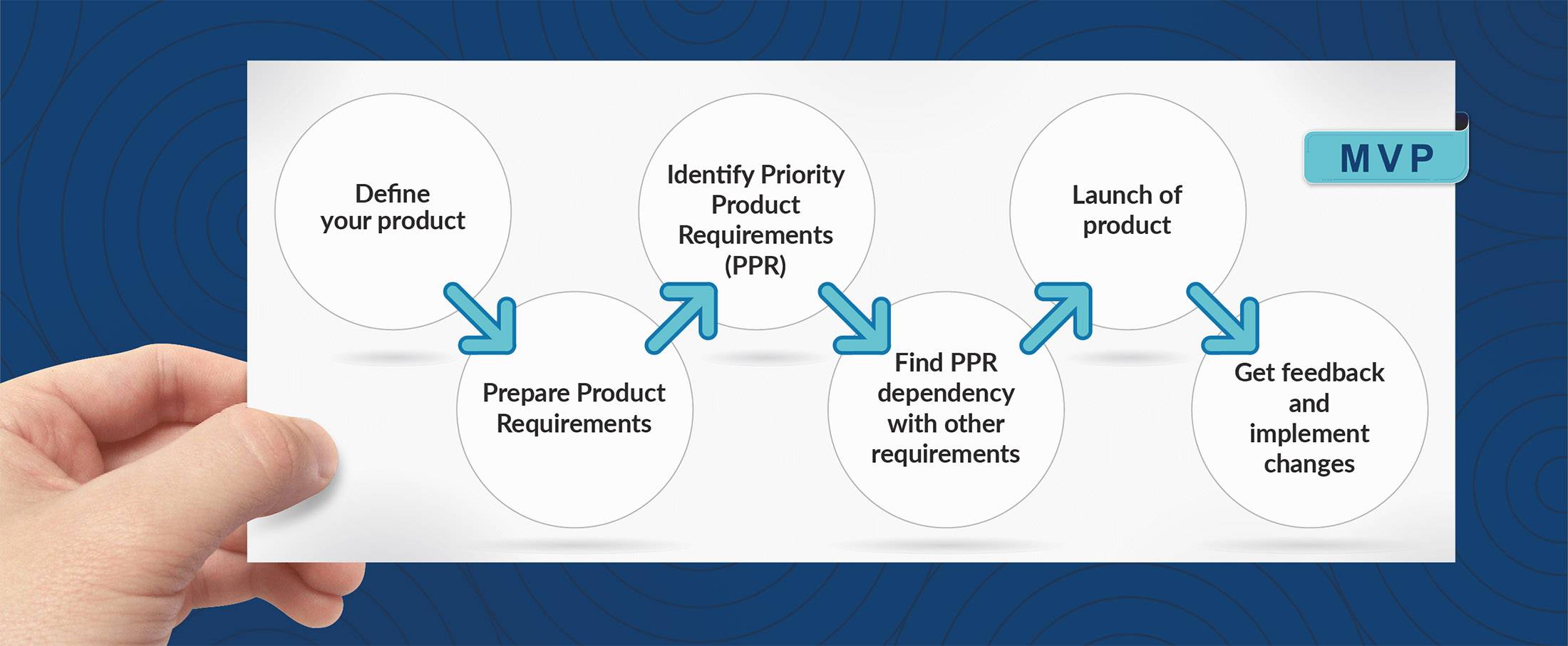3 Reasons Why You Need App Prototype For Your Idea
3 Reasons Why You Need App Prototype For Your Idea
So you have a smashing business idea. You put it into practice and so far, it has done well. Presumably, the next step for many entrepreneurs is to build a mobile application, or app, for engaging their customers better and expanding their base.
Mobile application development is a dynamic field, because every app is a creation that’s brought up from scratch. Hence, modifications along the way are inevitable. Building an app takes time, resources, and expertise. So it is always a good idea to create it with care, without haste and by using optimal resources. Creating an app prototype helps in this regard. It gives you obtain an overview of how the app will look, function, and interact before actually adding all the little things that make it wonderful.
In this article, we are going to give you 3 reasons why you need an app prototype for your idea.
Why is app prototyping important ?
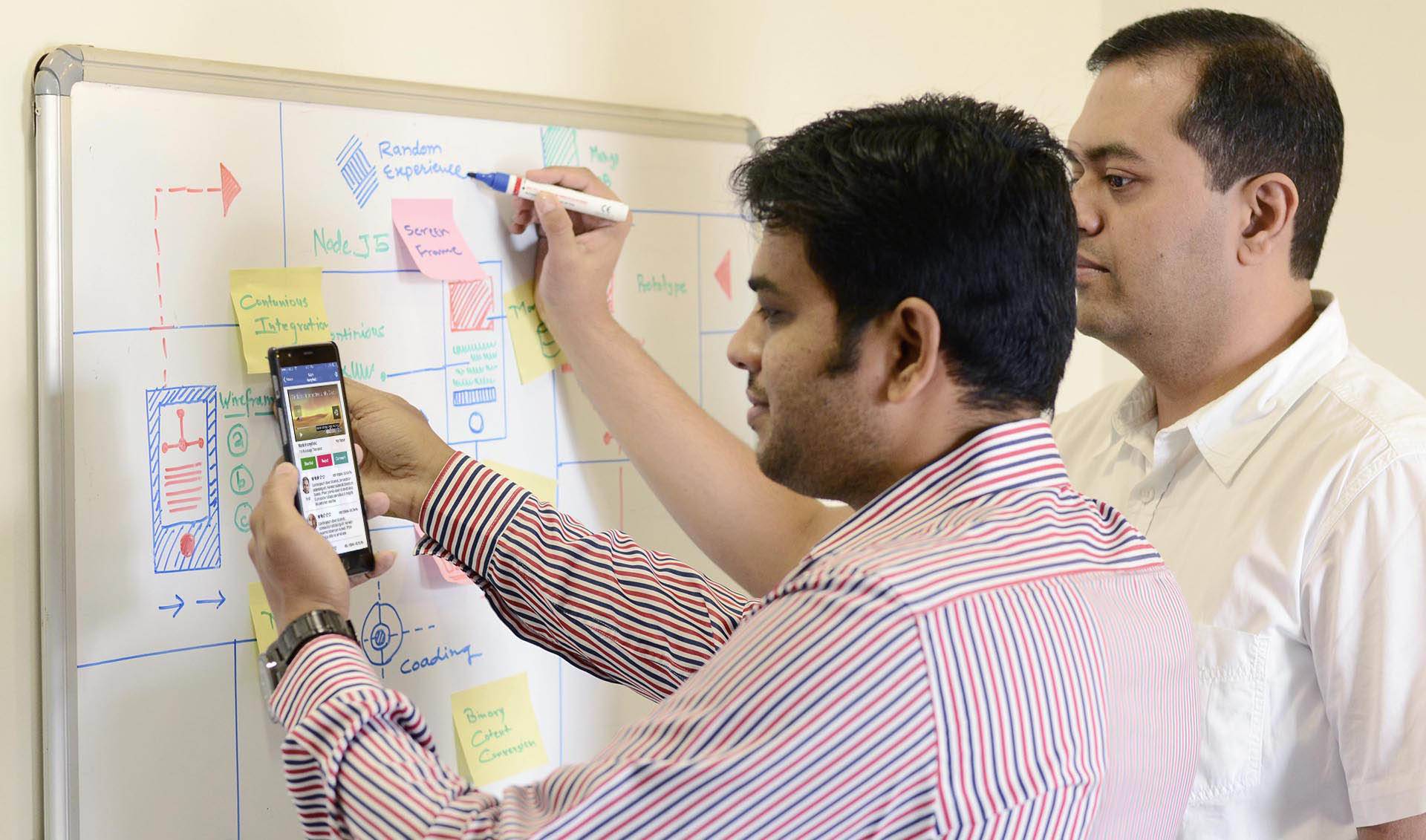
The importance of app prototyping is quite evident. Developing something from a simple vision of yours by transforming it into pure technology isn’t going to be straightforward. There will be changes. You may change your mind along the way. And so, it’s always a good idea to get an ‘outline’ created before the final draft. Here’s why app prototyping is crucial to the success of your business.
Time and money saving
This is the most obvious advantage of prototyping your app. Take the worst case scenario for example. Your development team is working round the clock on an app. They have already created the design, layout, and functionalities, and have got to the coding stage. But you aren’t entirely convinced with what they have come up with. There can be many reasons for this, the design didn’t appeal to you, you had something different in mind and couldn’t communicate it well enough, or you just changed your mind.
Now, you are in a fix because all the hours that your team spent in working on the app now requires putting in more hours for redoing. This means additional time spent on something that could have been avoided in the first place, and not to mention the financial and other resources. But if you have your team create a prototype before actually getting to the coding, then you can make the changes by just moving things around, like the placement of functions, or colours. When you are happy with the layout, then you can ask the team to begin coding and send it for testing without too many modifications. Sound better?
Valuable feedback
The most important asset to a mobile app is the end user. They are the true critics, because they are going to be using it to avail a service. The developer isn’t going to think like the end user. His perspective will be different; he will be thinking from a developer’s point of view. You, however, can give a better feedback on the app by looking at the prototype. Or you can test the prototype among a set of customers. Whichever method you choose, this feedback is extremely valuable to the success of the app.
For an app to succeed, it must be user-friendly, functional, and interactive. If it is difficult to use, slow to load, morphs on the screen, so on and so forth, it will be shunned. Users will stop using it after a few tries. The endeavour will be unsuccessful. When a prototype receives feedback, making modifications is easier than rewriting lines of code.
Testing for bugs and responsiveness

When you are thinking of building an app, responsiveness is a given. Bringing the website to screens of different resolutions is the basic aim here, and so, the prototype is of utmost importance. Imagine building the app only to realize later that it warps on the smart phone or the screen doesn’t resize to fit a tablet without showing a scroll. All these are potential problems that must be kept in mind.
The same goes for bugs. Yes, the testing phase of the app will come later. But there are potential bugs that can be checked and fixed, or avoided altogether, right now. The prototype is important here. It can point out some existing bugs that can be addressed before the app actually goes on the floor. And this again saves time and resources, ensuring user-friendliness along the way.
Little parting gift

Here are some extra handy tips for implementing during the app development stage –
1) In the mockup and prototyping stage, focus on interaction, functionality and layout. Don’t put too much emphasis on the design and colour.
2) Try and be as clear about your requirements as much as possible. If communicating these verbally is too much, make a list of features and requirements and run it by the team. Also get their perception of things to ensure that they are on the same page.
3) If you aren’t as adept with technological aspects of app building, communicate it to the development team. Have them break down the prototype and explain it to you in detailed terms.
4) Thinking only from the branding point of view is another no. Creating an app that’s overly design focused isn’t going to retain customers. It should be simple, memorable, and functional.
5) Try and remain in the loop during the app building process as much as you can. This saves time and costly modifications later on. Ask your team to let you know when some feature aren’t feasible from a development point of view. Knowing the why of it is also sufficient at times.
So there you have it. Now you know the benefits and importance of app prototypes for making your idea a success. And save your time and business resources in the process.
- Design
- Ideation
- Mockups
- Prototype
- UI
- UX
- Wireframes
Mobifilia
15 October 2017
